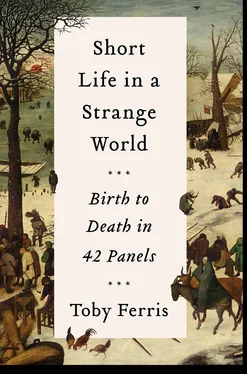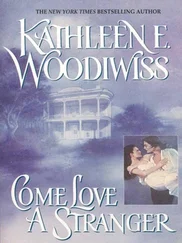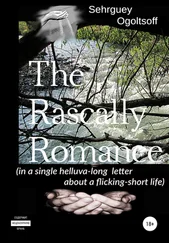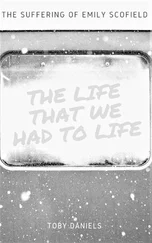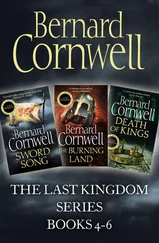Why else, after all, would you paint the Tower of Babel again and again (and again – there is documentary evidence of a third version from his Rome years, on ivory, now lost)? Who knows? The Colosseum must have made its impression on a young visual mind, its self-similarity, its modularity, its controlled barbarity. The Tower of Babel in the biblical sources represents hubris and fragmentation, but it also stands on the last edge of a unified world, one sufficiently sure of itself to embark on a grandiose building project. Bruegel’s contemporary and friend in Antwerp, the printer Christophe Plantin, would in the last year of Bruegel’s life begin setting his great bible, the Antwerp Polyglot , in five languages, Hebrew, Greek, Latin, Aramaic and Syriac, with dictionaries and grammars, itself a monument to clarity in fragmentation – as though bringing all these languages together in one huge volume under a sufficient weight of scholarship might metamorphose the sedimentation of scripture into a solid impregnable rock.
Tower, Empire, Bible: grown sufficiently tall, sufficiently all-encompassing, sufficiently all-explaining, they become like the earth itself: inescapable, eternal, boundless.
What lies under the eye of God and eternity? Great landscapes and towers, and tiny people.
On the fourth spiral of the Rotterdam tower, very close to the mid-point of the panel, you can make out, if you crane in close, very close, and stare hard (with your god-like eye), a tiny procession with, at its centre, a red baldachin. Under this, it has been suggested, a pope is making his ascent of the tower. Roman colosseum, pope at Rome, tyrannical Spanish inquisitors. Draw your conclusions.
A society on the brink of revolution, or lying under the yoke of tyranny, grows cryptic. Things are necessarily hidden. We have no way of knowing where Bruegel’s sympathies lay. All we know is that his compositional instinct veered towards crypsis: hide the subject.
*
I am beginning to get a feel for the Bruegel map. An outsider’s feel. The feel of an autodidact.
The Bruegel tower in Rotterdam is a pin. I can wind a string around it, stretch it over to Vienna and wind it again.
I still do not know, in Rotterdam, that I will see them all, that this is my project, so the map of all Bruegel remains at this point mostly featureless, speculative, a land of hearsay. I know that there are plenty in Vienna; others are in Madrid, Paris, London, New York. I have looked at the Bruegel page on Wikipedia, and have promised myself a book on Bruegel. But which one? Another unknown landscape stretches out before me, of Bruegel scholarship.
It will be by no means my first project. I have spent half a lifetime working up projects: Robinson Crusoe canoes, antique flying machines that never fly. All useless devices, but each informed by the same creative spurt, each one a new, futile form of flight, of escape. Just like that tower on the plain, on the edge of the sea, fugitive city making for the skies.
In the early 1950s my father and a friend of his called Bill (surname unrecorded) booked themselves on to a coach tour of the Low Countries: Bruges, Ghent, Brussels, Antwerp, Amsterdam. But the authority of their guide, the tyranny of the schedule, the sluggishness of the coach immediately chafed, and they abandoned the tour and took themselves off on a mad jaunt of their own devising: church, bar, red-light district. My father still talked of it half a century later (although he glossed over the red-light districts; I learnt about these after he died, from a notebook he kept). The trip was, for the rest of his life, a reminder of the exultations to be had from torching the programme and careening off the map.
I have known similar moments of minor exultation. For example, I have walked out of more jobs than most people have had jobs.
Things change, one moment to the next. One moment you are employed, seemingly reliable, a plodder; the next you are enjoying some sort of giddy breakdown.
The last time I walked out of a job, my first son was not yet one year old. This is not responsible behaviour. After a few months, I ended up on my feet, again, just, but this had to be the last time. I have tried revolution. The knucklebones are just knucklebones, in the end, and the patterns are always familiar. Perhaps I did not burn deep enough, early enough; perhaps I should also have salted the black fields of my existence. But the suspicion remains: there might be other ways to model your life.
On our return from Amsterdam, my brother and I run into difficulties. We have chosen to take the train so that we can stop for a few hours in the Brussels museum and refresh ourselves with Bruegel, but the train lines are down at some key junction. We wait for an hour on a cold platform with Styrofoam coffees, then take a train to the next stop down the line – The Hague. We have to get off. No one knows what is happening. We are told to get on a certain train, which takes us to the next stop – Rotterdam. And we have to get off again. Thus it continues, all day: we work our way from Amsterdam to Brussels one stop at a time.
Bruegel did not live in a world of timetables. Deadlines? Highly doubtful, although I can at least imagine a time-is-money Hieronymus Cock goading on his young artist, clapping his hands together in a show of energy, dividing up the labour, watching his costs. I can also imagine his young artist, possessed of a peasant’s appreciation of his own value, resisting, taking his time, not so much doing as getting around to .
We live otherwise. We must get back to England today. At each stop, when it seems we have finally run out of luck, my brother and I furiously google alternative planes, buses, but then before we can act a train turns up and there is a frantic cramming to get aboard. Dordrecht. Roosendaal. Antwerp. It grows late. Dark. We miss our connection in Brussels. And we miss the Bruegels. In the thick press of quantified time, all spears of purpose are, sooner or later, shivered.
I have a superstition about travel: it has a prevailing wind. If you make a there-and-back-again journey, you will be swept along easily in one direction, and have to beat back painfully in the other. But this is more than an ordinary squall or countervailing trades: it is clear to me now that we have offended the Netherland Poseidon. We have treated his realm as one entity, a large flat land with a common language, dotted with emblematic Bruegels. But it is not. It is fractured: by language, by politics, by religion, by river and sea, by the repelling magnetic North–South grain. And so we are smashed this way and that.
*
In 1566, called by contemporaries the Wonderyear , the Netherlands, North and South, were host to a spate of image-breaking. Churches were sacked, statues and paintings smashed, pulled down and burned, and the consecrated host, which renegade hedge-preachers called ‘the baked god’, was generally humiliated.
Some of the hedge-preachers – so-called because they preached outside the town and beyond the reach of civic jurisdictions – were Calvinist ministers who had returned after the suspension of the Inquisition in the Netherlands by the regent Margaret of Parma in April of that year; others were disgruntled ex-monks jumping the walls. They preached reform, and they preached iconoclasm, and in August, starting on the 10th in the town of Steenvoorde in the industrialized Westerkwartier of Flanders, some made good on their preaching by leading a mob to the chapel and sacking its images.
The violence spread, reaching Ypres on the 15th, Antwerp on the 20th, Ghent on the 22nd, Tournai on the 23rd and Valenciennes on the 24th. In Antwerp, the Feast of the Assumption on the 15th passed off peacefully with a parade of a statue of the Virgin, but on the 19th a group of youths entered the church where it was housed and mocked it. They were dispersed, but returned on the 20th accompanied by half the town. After some psalm singing, the church was sacked, with the rioters parading in the vestments, drinking the holy wine, and bathing their feet in the holy oil. In Ghent, the image-breaking extended to mutilation, mock-torture and mock-execution of statues and paintings. The great Van Eyck altarpiece Het Lam Gods was only saved by being hastily disassembled and concealed in a locked tower of the church under guard, while the iconoclasts went about their business below.
Читать дальше
